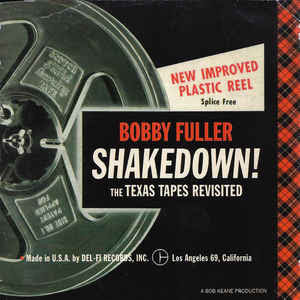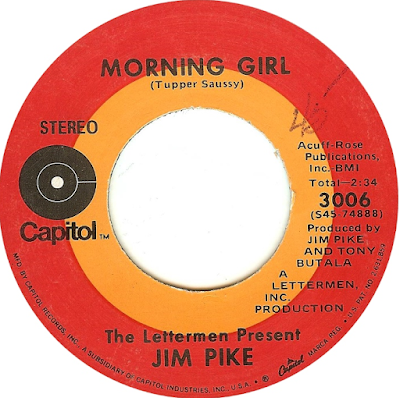“Across the Universe” (1970) – The Beatles * Written by John Lennon and Paul McCartney * LP: Let It Be * Produced by Phil Spector * Label: Apple
This Lennon number with the tricky guitar intro brings to mind the following: 1) Its far Eastern poetic aura, as if it were a hymn to John Lennon’s liaison with Yoko Ono; 2) evidence that the Maharishi era enhanced the Beatles’ artistry; and 3) that Lennon was a craftsman to the core. The Let It Be album version featured overwrought Phil Spector choirs, while an earlier version included bumble bee hums and horses. The Anthology version presents Lennon having trouble controlling his breath. Perhaps the best version overall is on Let It Be Naked, although it doesn’t include the ascending eighth notes that reinforce the outro on the Spector version. The chorus words jai guru deva are Sanskrit for, roughly, “hail the divine guru.” Lennon had learned them from the Maharishi, and we’re lucky Lennon’s disillusionment didn’t squelch his adoption of those beautiful words in this song. That he places the cosmic affirmative word om on a V chord instead of a I, though, does suggest a characteristic ambivalence.
Author: Kim Simpson
“Neighbor Neighbor” (1966) – Jimmy Hughes
“Neighbor Neighbor” (1966) – Jimmy Hughes * Written by Huey Meaux * 45: “Neighbor Neighbor” / “It’s a Good Thing” * Label: Fame
With his fan base in Houston and New Orleans, it was fitting that “Steal Away” Jimmy Hughes would also chart with a song written by Crazy Cajun Records’ Huey Meaux. “Neighbor Neighbor” (1966) reached #4 on Billboard’s R&B chart and #65 on the Hot 100, and captures Percy Sledge’s Alabama cousin sounding like Little Willie John’s rock and roll twin. In 1970, after a few unsuccessful years on Stax/Volt, Hughes would lose patience with the music industry and abandon it for a job with the nuclear industry in Tennessee.
“Abandoned Love” (1975) – Bob Dylan
An abandoned relationship song, sprightly and bittersweet, with a melody more memorable than anything else recorded for Dylan’s Desire album (all of which featured, as does this one, violin work by Scarlet Rivera). It eventually appeared on the 1985 Biograph box set, but why didn’t it make the Desire tracklist? The notes say Dylan dropped it to make way for “Joey,” his controversial and un-sprightly twelve-verse corrido about the mobster Joey Gallo, which makes sense because many other things were dropped for Gallo during his violent life.
“It’s a New Day (Part 1 and 2)” (1970) – James Brown
“It’s a New Day (Part 1 and 2)” (1970) – James Brown *Written and produced by James Brown * 45: “It’s a New Day (Part 1 and 2)” / “Georgia on My Mind” * LP: It’s a New Day – Let a Man Come In * Label: King
James Brown’s first charting single of the 1970s—a two-part slab of high grade funk—echoed a familiar strain of soul chauvinism, instructing a woman that where a man is concerned, she should “do what he wants and give what he wants.” Brown’s spoken opening lines, though, sound in retrospect like an incredulous dispatch from the dawn of women’s lib. “Fellas, things have gotten too far gone,” he says. “We’ve gotta let the girls know what they’ve gotta do for us.” In Brown’s “man’s man’s” world, it was girls vs. men. “A man can’t do nothing no more,” he says, before letting out a big, crucial laugh.
“A’Soalin’” (1963) – Peter, Paul and Mary

“A’Soalin’” (1963) – Peter, Paul and Mary * Traditional Arrangement by Paul Stookey, Elaina Mezzetti, and Tracy Batteaste * LP: (Moving) * Produced by Albert B. Grossman * Label: Warner Bros.
“A’Soalin'” is a folk rendition of “Soul Cake,” a traditional British Christmas song for the dead associated with certain door-to-door proto-Halloween traditions. This one stands out among holiday recordings by creating a haunting, wintry mood; its guitar part, too, still serves as an alluring entry point for newcomers to the instrument. But Paul Stookey’s verse about the “lit-tle chul-dren” brings to mind a demonstrative Dickensian headmaster. On the label, songwriting credits go to Stookey, Mezzetti, and Batteaste, even though it’s an arrangement.
“Morning Girl” (1969) – Jim Pike
“Morning Girl” (1970) – Jim Pike * Written by Tupper Saussy * 45: “Morning Girl” / “Here, There and Everywhere” * LP: The Lettermen – Everything Is Good About You * Produced by Jim Pike and Tony Butala * Label: Capitol
Although the label on the Capitol 45 label and the chart listings all credited “Morning Girl” to the Lettermen’s Jim Pike, this version of the Neon Philharmonic’s #17 hit from 1969 eventually showed up on the 1971 Lettermen album Everything Is Good About You. Pike and fellow group member Tony Batula get credit for the production, which might imply that they also did the shimmering, Percy Faith-conscious string arrangement. This was the last chart entry for anything written by the Neon Philharmonic’s Tupper Saussy, although future teen idol Shaun Cassidy would release a version of “Morning Girl” as his very first single in 1975. The B-side featured a Pike rendition of the Beatles’ “Here, There and Everywhere” with more of the A-side’s alluring strings.
“Mandom – Lovers of the World” (1970) – Jerry Wallace
 “Mandom – Lovers of the World” (1970) – Jerry Wallace * Written by Howard Cain and Mat Cain * Japan 45: “Mandom – Lovers of the World”/”Glory of My Woman” * Label: Liberty
“Mandom – Lovers of the World” (1970) – Jerry Wallace * Written by Howard Cain and Mat Cain * Japan 45: “Mandom – Lovers of the World”/”Glory of My Woman” * Label: LibertyHere’s a curious addition to the country pop singer Jerry Wallace’s resume, which also happens to be the biggest selling record of his career: a 1970 Japan-only jingle single that featured Charles Bronson on the sleeve. It was the soundtrack to a commercial for an aftershave called “Mandom,” starring Bronson as an urbane action figure who rewards himself at night by splashing the product all over himself like victory champagne. As he does this, Wallace gives the following lyrics one hundred-and-ten percent: “All the world loves a lover/All the girls in every land-om/And to know the joy of loving/Is to live in the world of Mandom.”
“If You Leave Me Tonight I’ll Cry” (1972) – Jerry Wallace
“If You Leave Me Tonight I’ll Cry” (1972) – Jerry Wallace * Written by Gerald Sanford and Hal Mooney * 45: “If You Leave Me Tonight I’ll Cry” / “What’s He Doin’ in My World?” * LP: To Get to You * Produced by Joe E. Johnson * Label: Decca
The TV show Rod Serling’s Night Gallery, which aired from 1969 to 1973, had a format similar to The Twilight Zone, with Serling as the host introducing creepy tales with twist endings. An episode called “The Tune in Dan’s Cafe” spawned the Jerry Wallace 1972 country #1 hit “If You Leave Me Tonight I’ll Cry.” The episode told the story of a jukebox that played the same record over and over again due to its being haunted by the ghost of a jilted lover. After the episode ran in January of ’72, radio stations received enough requests for the nonexistent record to prompt an official release by vocalist Wallace, who’d had moderate pop chart success until the mid-sixties, when he’d shifted gears to country. This overbaked hit version—barely listenable today—is sadly inferior to Wallace’s unavailable TV version, which had a harder country sound.
“Soon After Midnight” (2012) – Bob Dylan
“Soon After Midnight” (2012) – Bob Dylan * Written and produced by Bob Dylan * LP: Tempest * Label: Columbia
Bob Dylan, as an active participant in the folk and pop culture processes of reshaping idioms and traditions to create new art, has been no stranger—since the early days of his career—to accusations of plagiarism. Many of them are maybe too paltry to apply to a prolific force of nature like Dylan, and they do tend to distract from the big picture. Consider, too, how often he’s been ripped off. In September 2012, though, he lashed out at “wussies” who pointed out similarities between his work right at a time when his newly-released Tempest album had unveiled a song called “Soon After Midnight,” in which he uses the entire chord structure and musical road map of Bobby Fuller’s “New Shade of Blue.” Although Fuller and co-writer Mary Stone have both passed on, this seems like a case where gracious acknowledgment of the source would be in order. (From a previous post at Boneyard Media.)
“A New Shade of Blue (alternate version)” (1964) – Bobby Fuller
 “A New Shade of Blue (alternate version)” (1964) – Bobby Fuller * Written by Bobby Fuller and Mary Stone * LP: Shakedown! The Texas Tapes Revisited (1996) * Label: Del-Fi
“A New Shade of Blue (alternate version)” (1964) – Bobby Fuller * Written by Bobby Fuller and Mary Stone * LP: Shakedown! The Texas Tapes Revisited (1996) * Label: Del-Fi
This earlier take of Bobby Fuller’s “A New Shade of Blue” first became available on Shakedown!, a 1996 roundup of early singles and demos from 1961 through 1964. Compared to the later version that appeared on the Bobby Fuller Four’s I Fought the Law album, this echo-drenched heartbreaker is better, featuring some of Fuller’s most convincing vocals (which is saying a lot where he’s concerned), delicate guitars and lyrics (written by his neighbor’s mom), and a bullseye bridge. The later version loses too much of that atmospheric reverb. It also screws up the middle-eight’s flawless symmetry by knocking out a key minor chord and adding a measure at the end. And it also finds Fuller overdoing the lead vocal’s vibrato. In 2012, Bob Dylan would appropriate this song’s entire chord structure for his “Soon After Mindnight.”







